Introduction of red cherry G1 producing area, baking curve and cup test report, hand-flushing course
For professional baristas, please follow the coffee workshop (Wechat official account cafe_style)
ETHIOPIA,YIRGACHEFFE,Cherry Red
Ye Jia Xuefei Red Cherry G1
| 01 | production area profile |
Unique geographical environment
Yirga cheffe is a small town in Ethiopia, 1700-2100 meters above sea level. It is one of the highest coffee producing areas in the world and is synonymous with Ethiopian boutique coffee. Lake Turkana, Lake Abaya and Lake Chamo bring rich water vapor here. The Rift Valley, represented by Misty valley, is foggy all the year round, like spring all the year round, with a gentle breeze, cool and humid, and thousands of coffee trees thrive, giving birth to the unique and unpredictable atmosphere of Yejia Xuefei's unique fragrance of flowers and fruits.
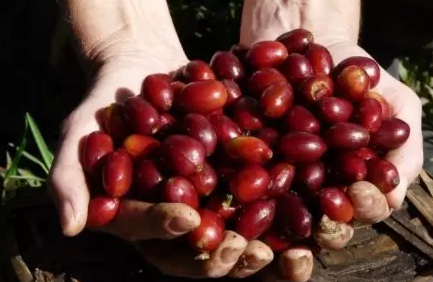
The Historical Origin of Yejia Xuefei
At first, Yejassefi's coffee trees were planted by European monks (a bit like Belgian monks growing wheat to brew beer), and later by farmers or cooperatives. Coffee trees are naturally scattered in forests, countryside and backyards. During the harvest season, the Ethiopian Coffee Trading Company will go to town to buy coffee beans collected by farmers and eventually sell them under the brand name "Yega Xuefei".
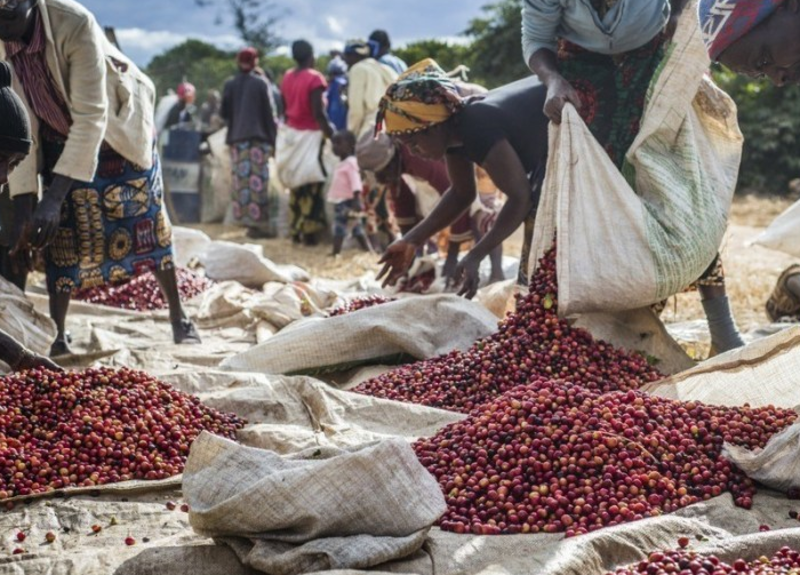
About the Red Cherry Project OPERATION CHERRY RED
Speaking of the "Red Cherry Project", many friends are no stranger to this name. So what kind of project is the Red Cherry Project? Maybe only a few people can tell.
In order to improve the income of Ethiopian coffee farmers and improve the living standards of the local people, in 2007, Trabocca, a Dutch trader, launched the "OPERATION CHERRY RED PROJECT" Red Cherry Project with farmers from the producing areas. It is purely to encourage farmers to improve the quality of coffee beans. At the beginning of the harvest season in the producing area, Trabocca will specify a harvest plan for the microclimate area to harvest 100% ripe red coffee cherries by hand, with a yield of about 1500 kg-3000 kg.
The Red Cherry Project invested $5000 in 2008 to purchase new sun drying racks. In 2009, another $8000 was invested in the procurement of new sun drying racks and sunshade nets. A $9000 generator was invested in 2010 and a further $10000 was invested in 2011 to improve some local coffee transport roads to make transporting coffee more convenient and efficient. Trabocca offers interest-free loans to buy new coffee cherry meat removers and coffee bean sorters. In order to facilitate suppliers' procurement, a high-quality Addis Ababa coffee cup testing laboratory was built with an investment of US $14000 in 2012.
Trabocca provides financial loan support, new hardware equipment and production processing knowledge and technology to help farmers improve their production, promising to pay generous prices as long as the quality of actual output meets the cup test standards in Ethiopia's Addis Ababa and Amsterdama Cup in the Netherlands. The passing standard set by Trabocca is 88 points.
The coffee beans of the Red Cherry Project are immediately packed in plastic inner bags (GrainPro bags or vacuum box) immediately after the processing of the origin is completed, then shipped to Djibouti for shipping. Strive for perfect quality through immediate monitoring, safe transportation and timely and appropriate handling. As a result of this red cherry program, roasters can buy high-quality coffee beans, improve the quality of Ethiopian coffee and have better prices. Trabocca can also return profits to farmers, and continue to improve and improve the quality.
02 | processing method
This sun-treated coffee has slightly larger granules and slightly lower density and water content. Each coffee from this processing plant can be considered a high-quality refined coffee, which shows better characteristics than other coffees. no matter which method of treatment is used, the coffee beans here can be considered to be the best coffee in Yega.
After screening the available coffee cherries, the treatment factory puts the whole coffee cherries with intact pulp and peel in the elevated shed for sun treatment, which is a way of putting in high-intensity human labor, isolating contact with the ground, preventing the miscellaneous smell of soil in the process of sun exposure, and creating an unusually clean fruit flavor. After more than two weeks of sun exposure, the dark brown coffee fruit is stored professionally, waiting for the whole flavor to ripen. Before shipping, the processing plant will take the coffee beans out of the coffee cherries, and the sweetness can be imagined.
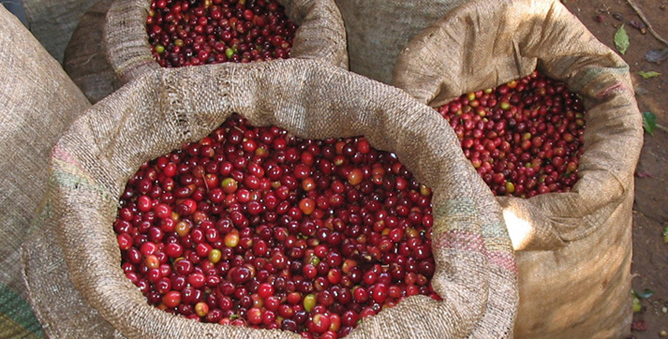
03 | Analysis of raw beans
On the grading of Yega Xuefei
According to the different ways of handling raw coffee beans, Yega Xuefei can be divided into two categories:
Category An is the washing method, and the grade standard is set by the American Fine Coffee Society SCAA. It is divided into Gr-1;Gr-2. The smaller the Arabic numeral is, the higher the grade is. The style of G1 Yega Chuefei is distinct. The flavor of citrus and floral flavor in the coffee liquid is an irresistible delicacy for everyone.
Category B is sun-treated coffee raw beans, with a grade of Gr-1;Gr-3;Gr-4;Gr-5, and the same highest grade G1 sun Yega Chevy is fruity. Opening the freshly baked G1 Sun Yega Chevy coffee bag can subvert people's original understanding of coffee. Only those who have tasted the highest grade sun Yega Chevy will believe that coffee is a kind of fruit.
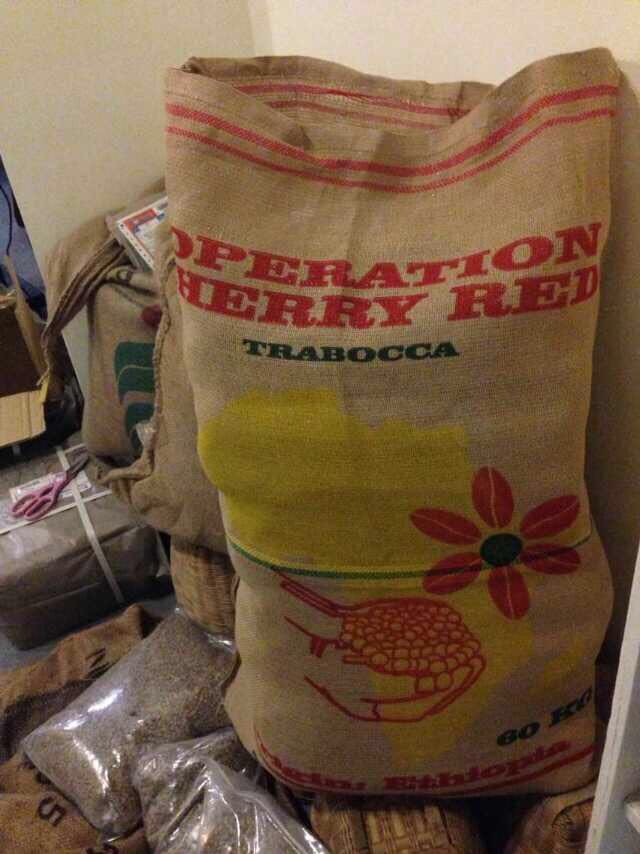
The export is packed in ordinary sacks, and Trabocca is printed and dyed on the sacks.
Yejia Xuefei body variety is a local native species, small grain species, the appearance is relatively round, the bean body is very small, mostly between 14 and 15 orders.

The color of Yirgacheffe Cherry Red Grade 1 raw beans is yellow and green, which is a typical color of sun-cured coffee, with uniform and plump particles and few defective beans.
04 | Baking analysis
Beans with such a gorgeous flavor are certainly not suitable for deep baking, so the shallow slow roasting method of this coffee can best reflect its round and sweet, rich flower and fruit aromas.
This coffee has relatively small particles, moisture content, heat absorption in the baking process is also relatively large, the Mena reaction process is also relatively fast.
In the first baking, the temperature of my beans is relatively high. Before the coffee beans are dehydrated and yellowed, I use 160 firepower to ensure that there is enough heat to last until the first explosion, develop directly to the second explosion, and determine the development of the area line.
In the second, third and fourth baking, the same bean temperature of 200, the same firepower, in the baking process gradually reduce firepower as needed.
This stove is a shallow roast for quick frying:
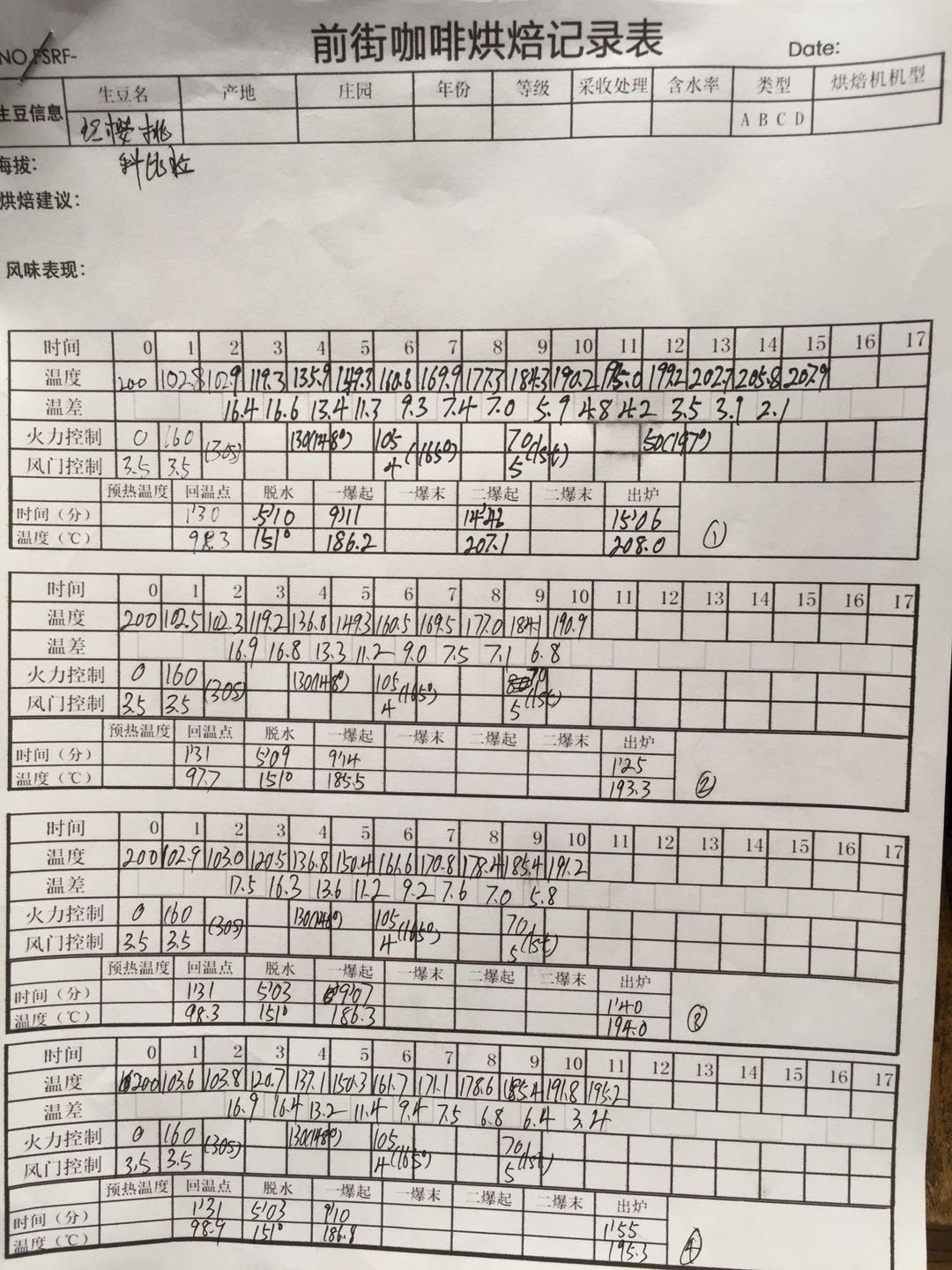
Cup test:
Roast one: strawberry, raspberry, vanilla, honeydew, juicy
Baking curve 2: strawberries, raspberries, vanilla, honey, juice
Roast two: manguo, black brin, citrus juicy
Baking curve 3: mango, black brin, blueberry, citrus juice
Roast three: citrus juicy, cream
Baking curve 3: citrus juice, cream
Roaster Yangjia 600g semi-direct fire
Using quick-frying mode, the furnace temperature is 200 degrees Celsius into the pan, the throttle is set at 3.5 degrees Celsius and the firepower is adjusted to 160 degrees after 1 minute, the throttle is unchanged, the firepower is adjusted once at 148 degrees, it is reduced to 130 degrees, baked to 5: 03 ", the temperature is 151 degrees, the bean table turns yellow, the smell of grass disappears completely, dehydration is completed, the firepower is adjusted to 105 degrees, and the throttle is opened to 4 degrees.
In the 8th minute, ugly wrinkles and black markings appear on the bean table, and the smell of toast obviously changes to the smell of coffee, which can be defined as a prelude to an explosion. At this time, listen clearly to the sound of the explosion point, start to explode at 9: 07 ", adjust the firepower to 70 degrees, and the throttle is fully open (the firepower should not be so small as to be free of bursting sound). Put the pot at 194 degrees.
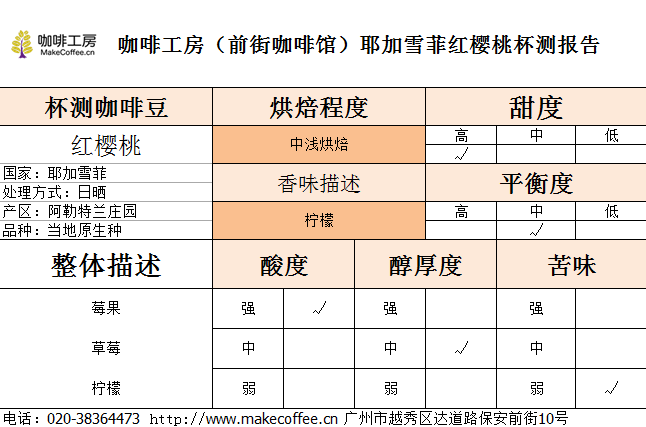
The dry aroma of Yejassefi is full of fruit, with strong aromas of dried fruit, strawberry, mango and apricot jam.
Wet fragrance is like sweet syrup, like sticky apricot juice, wrapped in plain honey or chocolate. The entrance is not strong, the mellow thickness is medium, the sour taste is not obvious, but it is lively and bright, like fruit black tea.
04 | Cooking analysis
The flavor of Yejia Xuefei
Cooking method
As for the way of brewing, hand brewing and siphon brewing are the best. When you grind the beans, you can smell the sweet smell of the sun fruit.
Gentle and delicate, sweet and lovely. Yega Chuefei exudes an extremely complex aroma and shows an extremely excellent taste that is difficult to describe.
First cooking: V60 filter cup, 15g powder, water temperature 90 degrees, grinding 4, ratio of water to powder close to 1:15
31 grams of water is steamed for 29s
Segment: water injection to 99ml cut off, slow water injection to 230ml
31-99-100
Palate: strawberry fruit is sour, with astringent tail and mixed taste.
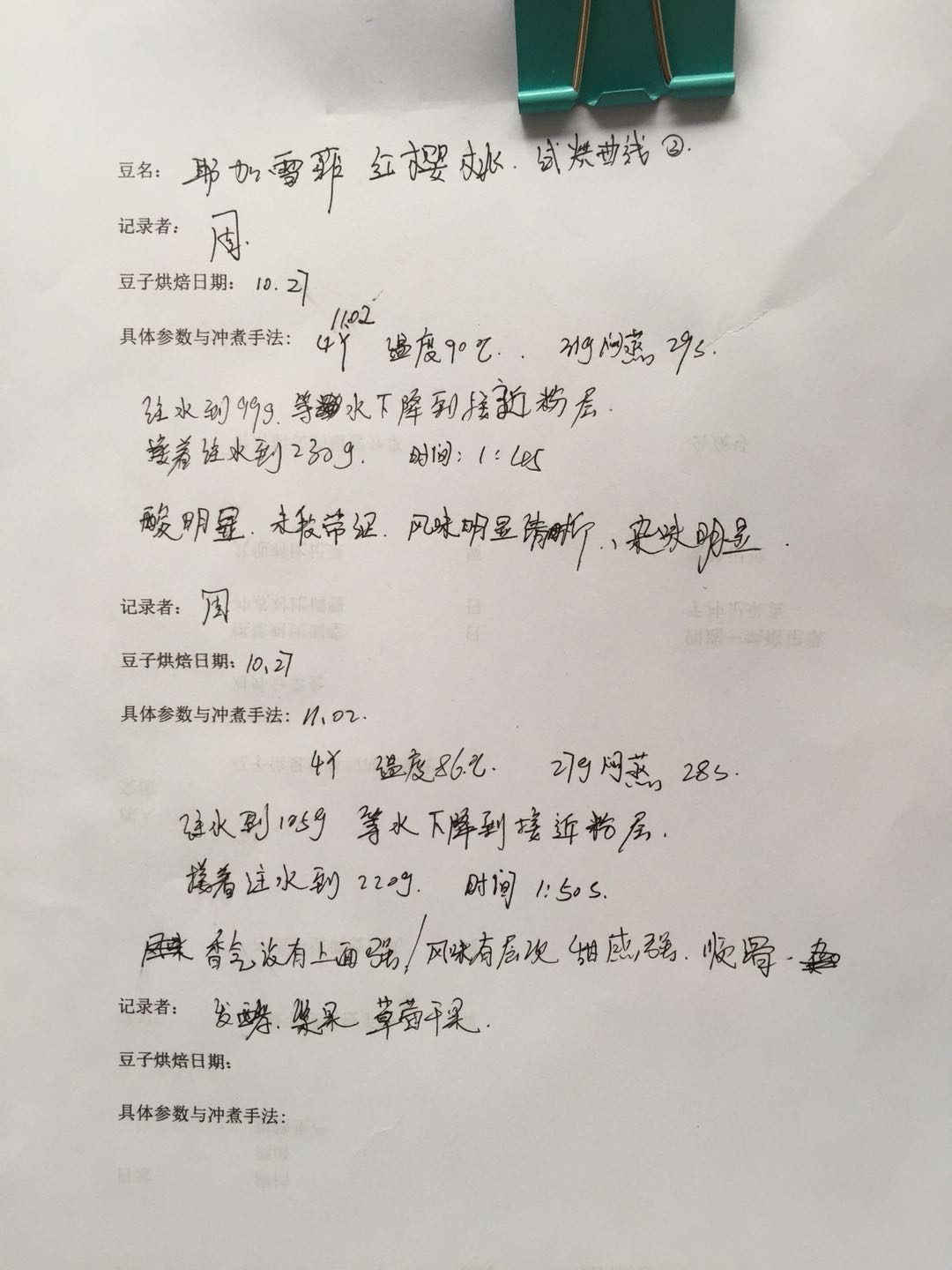
Adjust the grinding degree from 4 to 3.5 (fine) and lower the water temperature.
Second cooking (modified): V60 filter cup, 15g powder, water temperature 86 degrees, grinding 3.5
The ratio of water to powder is close to 1:15
27 grams of water is steamed for 28s.
Section: 27-105-88, time is 1:50 (steaming starts)
Palate: smooth, thicker flavor, layered, enhanced sweetness of fermented berries
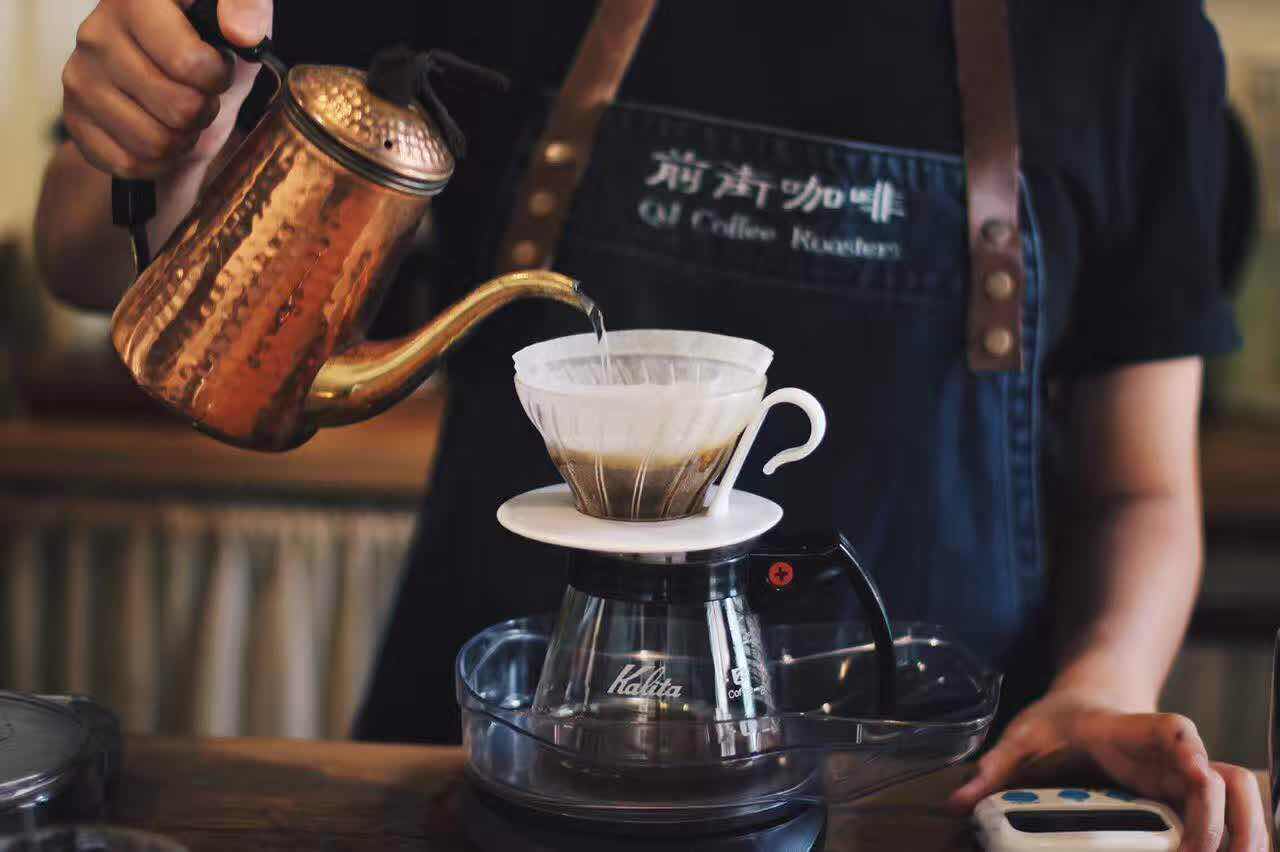
The flavor of the fermented wine of wet ripe berries makes people not believe that this is Yega Chuefei, but this kind of wet fragrance is not very popular. But from the extremely smooth entrance to the delicate mellow thickness, the sour and sweet appearance of ripe fruit is really amazing, more sweet than any Yega I have ever drunk before. Yu Yun's performance is also quite good, worthy of the "fruit bomb", which can basically guarantee that the mouth can still feel sweet for half an hour after drinking.
Important Notice :
前街咖啡 FrontStreet Coffee has moved to new addredd:
FrontStreet Coffee Address: 315,Donghua East Road,GuangZhou
Tel:020 38364473
- Prev
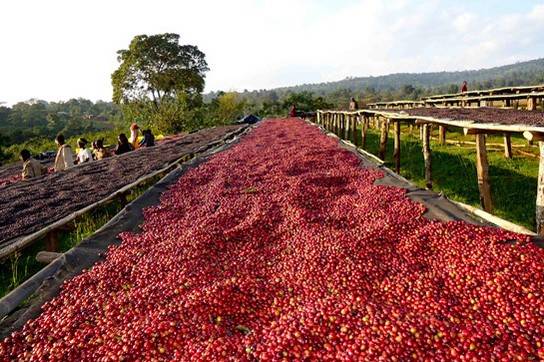
The flavor characteristics and story of G _ 1 coffee beans in the Red Cherry Project G _ 1
ETHIOPIA,YIRGACHEFFE, Cherry Red Yejasuefei Red Cherry G01 | unique geographical environment Yirga cheffe is a small town in Ethiopia with an elevation of 1700-2100 meters. It is one of the highest coffee producing areas in the world and is synonymous with Ethiopian boutique coffee. Lake Turkana, Lake Abaya, Lake Chamo to this
- Next
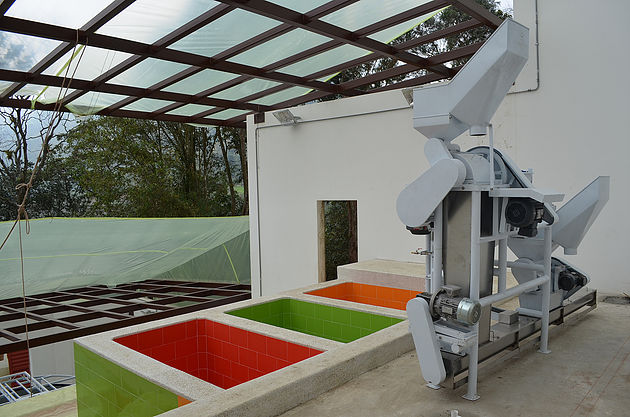
Introduction to the treatment methods of the three best coffee farms in Colombia
Professional baristas please follow the coffee workshop (Wechat official account cafe_style) this time it is about three Colombian coffee farms. The first La Palma y El Tcan is attracted by their fermentation methods, and the other Finca Santuario is because the author recently bought their love elixir, so I want to know more. The third is Finca Santuario's sister.
Related
- Does Rose Summer choose Blue, Green or Red? Detailed explanation of Rose Summer Coffee plots and Classification in Panamanian Jade Manor
- What is the difference between the origin, producing area, processing plant, cooperative and manor of coffee beans?
- How fine does the espresso powder fit? how to grind the espresso?
- Sca coffee roasting degree color card coffee roasting degree 8 roasting color values what do you mean?
- The practice of lattes: how to make lattes at home
- Introduction to Indonesian Fine Coffee beans-- Java Coffee producing area of Indonesian Arabica Coffee
- How much will the flavor of light and medium roasted rose summer be expressed? What baking level is rose summer suitable for?
- Introduction to the characteristics of washing, sun-drying or wet-planing coffee commonly used in Mantenin, Indonesia
- Price characteristics of Arabica Coffee Bean Starbucks introduction to Manning Coffee Bean Taste producing area Variety Manor
- What is the authentic Yega flavor? What are the flavor characteristics of the really excellent Yejasuffi coffee beans?

